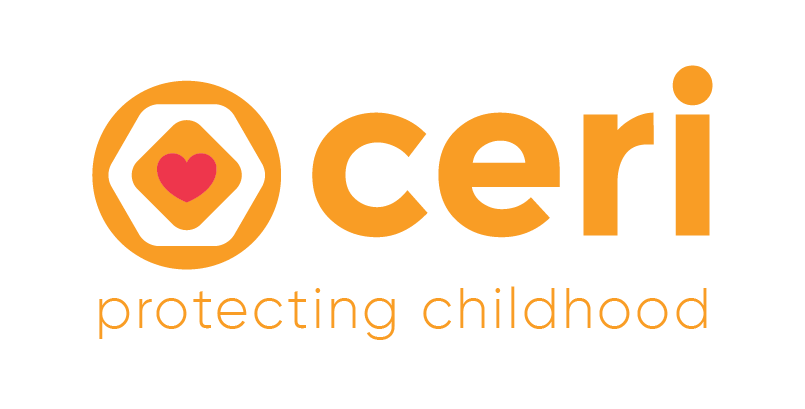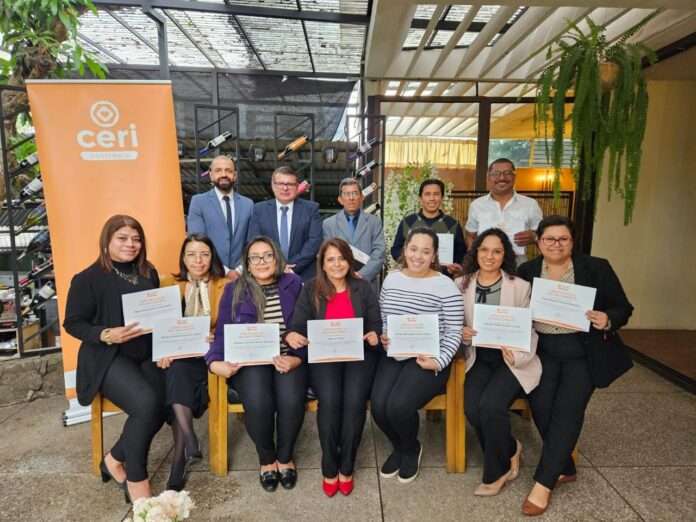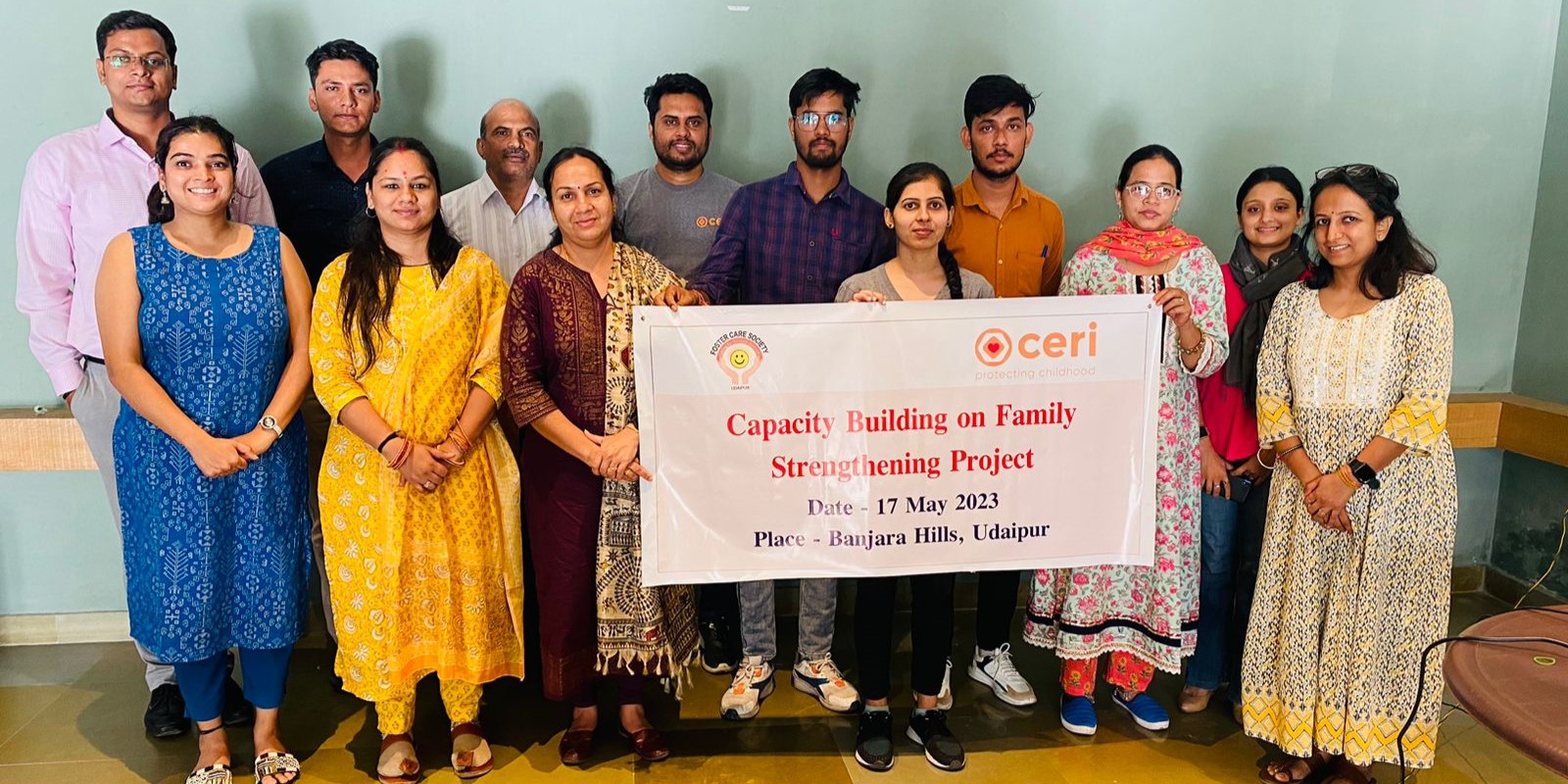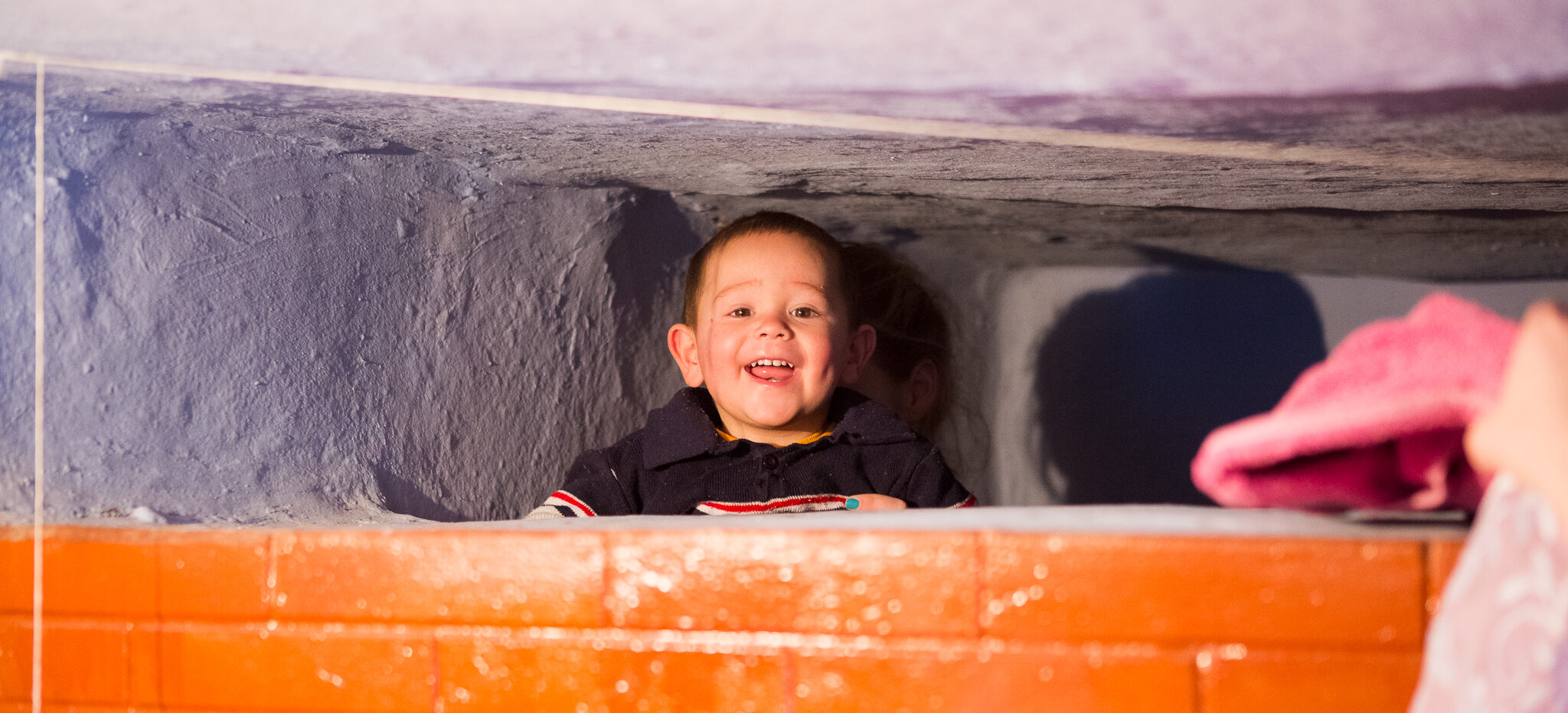Many of you may not know, but CERI has been challenging the status quo for child protection in Southeast Asia with the message that institutions should be a last resort for children. It is a monumental, ambitious and life-changing task.
In the United States, we take for granted that children in foster care do not live in big orphanages, confined to cribs and crying, alone, waiting for a bit of attention. In India, though, that is a real story. Not all the orphanages and not all the children, but it does happen, and more than we would like to think. In Sri Lanka and India, CERI is working or helping partners toward social change. In both countries and throughout South Asia, child trafficking, abuse (both sexual and physical), and emotional, educational, and psychological neglect are common.

But globally, a shift is occurring, and in India, governments and organizations are talking about the need for de-institutionalization and child care reform, calling for countries to change their entire child care systems to view institutions as a last resort instead of a first resort.
In South Asia, this is new thinking that requires intent, patience, and confidence. Thankfully, the BCFS System is strong and time tested, and on this foundation we are building our lighthouse.
First our partners are working to change the conversation from a black-and-white “close orphanages and build families” to a very flexible “what can we do, at every moment, for the best interest of the child and family?”
Though many people de-institutionalization (De-I) is only about closing institutions, there’s much more at play. De-I entails a comprehensive transformation of child protection systems. It starts with reinforcing all kinds of family and parent support services to ensure that separation of a child from his or her family really is a last resort and moves down the continuum of family-based care, services, and family-like solutions until reaching institutions as a last resort. The goal? Close down all big institutions and only have them provide “group” care in specialized and needed settings.
In India, the shift from “families last” to “families first” is happening quickly and slowly at the same time. Like India itself, the change is dichotomous. The situation in India is still overwhelmingly institutions (orphanages) as a first option.
Here’s an example: If you are a child in need of care and protection in India, until recently, you either were without services or were sent to an institution (orphanage). The Indian government would write an order to send you to an institution, believing that it had done the best for you; and, considering no other option existed, it often had. You usually lived your days there until your 18th birthday and then “aged out” of the child protection system. No documentation is recorded for where you went, how you survived, or what you did next. Statistics worldwide show, though, that children in institutions are 40 times more likely to have a criminal record than their peers, ten times more likely to be victims of sex trafficking, and 500 times more likely to commit suicide. A difficult picture? Yes, but there is hope on the horizon.
India and much of South Asia are rapidly moving toward de-institutionalization and child protection reform. Governments and non-governmental organizations are working together to make institutions a last resort. And family a first resort. Research shows that children do better in families when their “best interest” is considered first and foremost.
But this could all go horribly wrong. CERI is working to mitigate the risks.
I’ll be honest, I suspect that for the next decade, children in India will be at greater likelihood of harm than safe in the foster care system. There is still very little cultural acceptability for taking a child of unknown background into one’s home. It is interesting though, as India’s dichotomous nature rings through here, as communities have functioned as joint families for years, absorbing problems naturally. But in our 2018 world of joint families breaking down and nuclear families on the rise, stigma surrounding a child who is “not your own” is alive and well. Other interesting contrasts in India are things like kinship care, which is very much part of our Indian culture and happens informally, yet the formal system does not recognize it. Therefore, child protection services are not reaching those in these informal arrangements. At the same time, formal foster care is still stigmatized in India’s cultural norms. However, in looking at the future of India’s children, the country and its institutions must justify the risk for the greater good of children by allowing them the option of family-based care. Tough, right? We can only do better for children by coming together. Sounds unfathomable, right? Children at risk? Intentionally? That’s not it at all. Seriously, it’s not like we are going to intentionally put children in harm’s way. But by acknowledging these risks, we can, hopefully, manage them well when they come up.

We must remember that social change happens over generations, not years; through cultures and practices, not orders and conferences.
Last year, the Indian government passed Model Foster Care Guidelines for the entire country. The guidelines are a wonderful foundation, and the states have been asked to adapt or adopt these guidelines into operations. They are slowly doing so and progress is happening.
But here’s the risk: that a state will provide its districts with a broad mandate like “start foster care,” and, in turn, the states would come up with a somewhat arbitrary number like, “have 50 vetted foster homes per district by the end of 2017.” The intention is good, but really, the ground workers do not have the capacity to find fit foster families, counsel children properly, support foster parents, and monitor and evaluate the foster homes. In this scenario, a child would be placed with a family without beingproperly counseled on the placement. Families, too, would be given a child without a reliable support system in place. Without that support system, a placement could break down. Ultimately, this translates into children at risk.
Any shift in culture or tradition can be tough, and right now, this idea of de-institutionalization has no back-up options! At CERI, we talk often about how our relatively small resources can make huge impact. We start with constructive discussion and debate about the realities of shifting the system. Here’s why children will be at risk and we should acknowledge, accept, and work every moment to reduce these risks (I promise this article won’t leave you wanting to curl up in a ball and eat ice cream afterwards):

- In a system where the words “foster care” and “family strengthening” are brand new, children going into foster care will be without support and understanding. They will be at risk, and the families will be without proper vetting, training, support, supervision, or understanding.
- A system that has relied on only institutions for more than 100 years does not change overnight; systems forced beyond their capacities make compromises.
- Both government and nongovernmental organizations will start piloting family-based care options for children. While their work might be amazing, for large-scale social change, their work must include strategy and coordination. If, at the end of the day, these organizations move onto the next project or just the “next big thing;” the children will lose.
- The gap between policies on paper and the capacity on the ground is often glaring. Children are at risk when a policy says one thing and the ground-level workers understand something different. We must also learn from others. Many other organizations that have children’s best interests in mind have worked or continue to work toward deinstitutionalization, and each one provides a glimpse into the process toward what has gone right, and what has gone wrong. Finally, here are some of the practical things CERI is contemplating to mitigate the huge risks involved with de-institutionalization and child protection reform everywhere we have an impact:
- Create a culture of practice surrounding, legitimizing, and systematizing family strengthening and gatekeeping as the number one action for every child. Plainly, it means that every—and I mean every—case manager and social worker who works with a child should ask themselves throughout the entire process, “does this child need to be here?” and “Is this plan or placement suitable and necessary for the child?” This culture of practice must be fundamentally built around the child.
- Remind people not to rush. While individuals have little control over the way a government will roll out systems, everyone must be screaming “put on the brakes!” when social change happens. It often happens too quickly, in non-collaborative ways, and without buy-in from enough people.
- Advocate for the allocation of resources. The startup of anything starts in the red and has a negative cost-benefit analysis for a while. This is okay if the risks are assumed and strategized. For de-institutionalization, the resources must exist to pilot programs, encourage collaboration and learning, share knowledge, and address risks.
- Encourage collaboration. Organizations big and small alike need to put away ego and always put the best interests of a child and a family first. Yes, organizations need to survive, and yes, they need projects, but too often outcomes for children are compromised for outcomes on a piece of paper.
- Educate the ground workers. The people who are tasked with doing de-institutionalization are the heart of this work. If they do not know what to do, are not committed to this work, or are not supported, pockets of unsustainable and sub-par work will create an ineffective culture of practice. These critical workers play a vital role in systems of care reform, and it is vitally important to educate them on the theory and practice of de-institutionalization, and about networking with police, hospitals, teachers, psychologists, and community leaders. Policies rarely mention the workers that carry out the directives and oftentimes governments are not invested in building their capacity. Without them, however, the system is one leg of a stool.
- Entice and fuel public debate. Foster parents cannot say “I’m ready” if they have never heard of foster care. A government cannot allocate money for family strengthening if it has not seen the benefits. Public debate often scares us, especially in a place with 1.2 billion people. But without it, nothing will change, and with it… everything can change.
- Collect data and produce evidence-based research that is accessible to all in local languages and in forms that are sharable via social media. Use this research to measure and evaluate progress and impact.
- Create, streamline, and maintain information channels that embrace everyone working in the field.
- Ensure child participation every step of the way. All of these services must wrap around the child. Their absence in designing the system would be counterproductive.
To date CERI’s partners have:
- Developed one of the first foster care programs in Sri Lanka that addressed the needs of thousands of children left without families following the devastating 2004 tsunami and years of civil war.
- Advanced the passing of child protection legislation in India and Sri Lanka.
- Developed the first state-level foster care and family-strengthening legislation in India, and built capacity into dozens of governmental, nonprofit, and faith-based entities working in child protection across South Asia.
At the heart of all our work are better outcomes for children. Together, this is not only possible, but inevitable. Is this too big a task? No way. Stay tuned!





